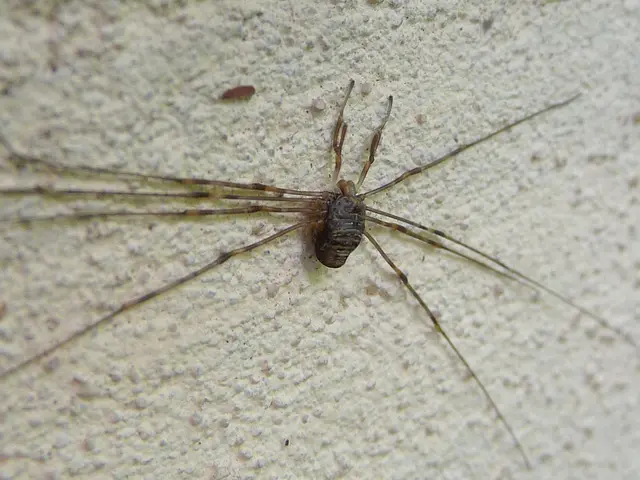Recognizing signs: Age spots or skin cancer - Distinguishing marks
Harmless Age Spots: Recognizing the Differences and Similarities with Skin Cancer
As the skin ages, it may develop age spots, which can resemble some types of skin cancer. These spots, however, are benign and do not require medical attention. Both age spots and skin cancer, however, share common locations, especially on areas exposed to the sun.
Understanding the key differences between age spots and skin cancer is vital for early detection and proper management of potential skin concerns. The major differences lie in factors such as texture, color, and placement.
Age Spots
Age spots, or solar lentigines, are small, flat, and smooth patches that appear darker than the surrounding skin. They are typically brown, gray, or yellow and have clearly defined borders. They usually develop after middle age and are more common on lighter skin types. Unlike skin cancer, these spots do not cause itching, bleeding, or discomfort. They occur due to an increase in melanin production, a pigment that protects the skin from sun damage.
Skin Cancer
Skin cancer is a serious health concern that requires prompt medical attention. Like age spots, skin cancer can develop on sun-exposed areas. The formation of skin cancer is linked to UV radiation from the sun or tanning beds. When UV radiation or other environmental or genetic factors damage skin cells, they multiply, grow, and spread at an accelerated rate. The three most common types of skin cancer are basal cell carcinoma, squamous cell carcinoma, and melanoma.
Another condition that may resemble age spots is actinic keratosis, a precancerous growth caused by UV radiation damage. If left untreated, actinic keratosis could progress to skin cancer.
Symptom Comparison
Paying close attention to the characteristics of the spots on the skin, such as size, shape, texture, and color, can help people distinguish between age spots and skin cancer. The following table outlines the differences in symptoms for age spots, skin cancer, and actinic keratosis.
| | Age Spots | Skin Cancer | Actinic Keratosis ||------------------|------------|-------------|------------------|| Color | Light to dark brown | Multiple colors, can be pigmented or red| Skin-tone, red, pink, brown, tan || Texture | Smooth | May be ulcerated, crusted, or raised | Rough, sandpaper-like || Symptoms | None | May bleed, itch, or be painful | Sometimes itchy, tender |
Treatment and Diagnosis
While age spots do not require treatment, cosmetic options are available for those wanting to reduce their appearance. These options may include bleaching creams, laser therapy, cryotherapy, or chemical peels.
In cases where a spot's origin is uncertain, a dermatologist may perform a physical examination or skin biopsy to confirm the diagnosis. Skin cancer treatment options vary and may include surgical excision, topical chemotherapy, radiation therapy, or immunotherapy, depending on the type and stage of the cancer.
Regular skin self-exams and dermatologist check-ups are essential for the early detection and effective treatment of skin cancer. If a spot changes in size, shape, or color, seems different from other spots on the skin, itches, crusts over, or does not heal within 4 weeks, consult a healthcare professional for evaluation. Prompt treatment improves outcomes.
- Beyond age spots, other skin conditions that could resemble them are medical-conditions like melanoma and actinic keratosis, requiring the attention of dermatology and oncology experts since they are linked to skin cancer.
- In the realm of health-and-wellness and skin-care, it's crucial to understand that while age spots are harmless and cause no discomfort, other skin conditions such as melanoma may bleed, itch, or be painful, necessitating medical intervention.
- Skin cancer, which shares common locations with age spots, particularly on sun-exposed areas, is a serious concern that scientists have linked to UV radiation from the sun or tanning beds.
- Age spots, on the other hand, are typically smooth patches that appear darker than the surrounding skin, with clearly defined borders and a color ranging from brown, gray, or yellow.
- During regular medical-condition check-ups, it's important to examine skin thoroughly and pay attention to spots' characteristics like size, shape, texture, and color, to distinguish between age spots and potential skin cancers.








